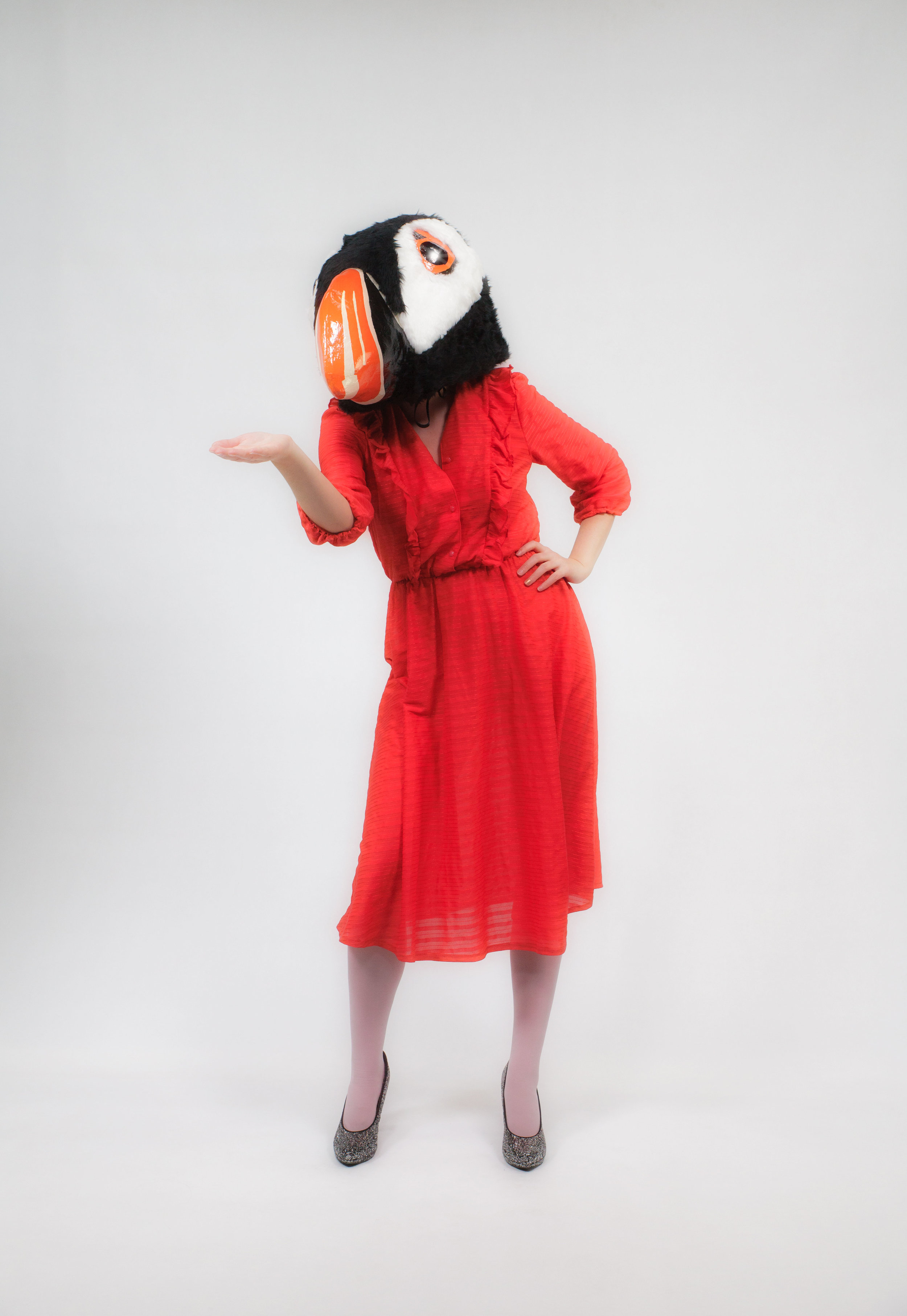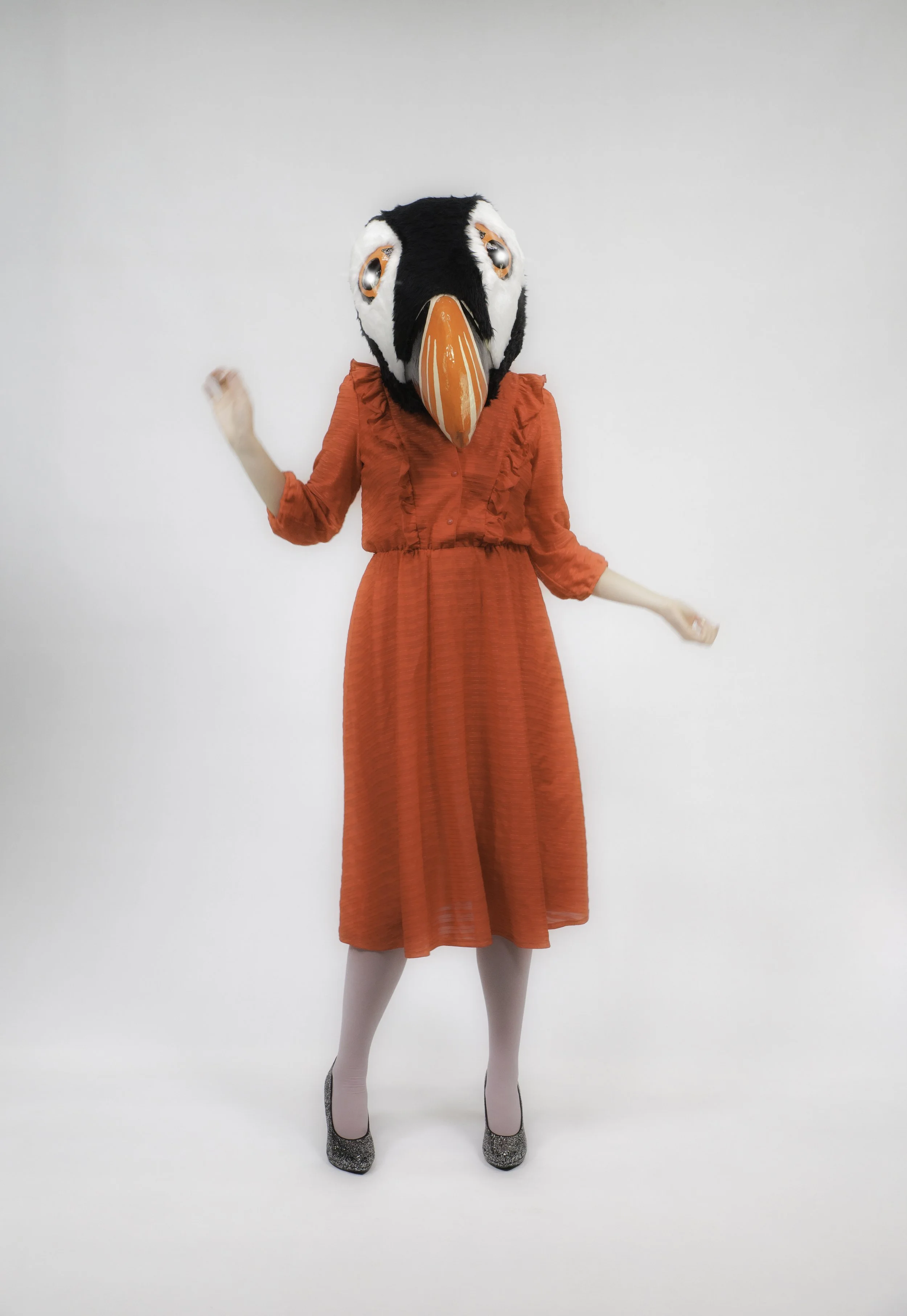Artist as a Puffin
2019, Digital C-print with archive ink on Hahnemühle Photo Rag Baryta 315 g. Sequence of 15 prints, each H51 x W35 cm.Academics Katla Kjartansdóttir and Kristinn Scram in their article Mobilising the Arctic. Polar Bears and Puffins in Transnational Interplay published in 2020 in peer-reviewed book publication ‘Mobility and Transnational Iceland’ that can be downloaded as a pdf here.
The Artist as a Puffin/The Puffin as an Artist
The puffin has also played a key role in several works by contemporary Icelandic visual artist Hulda Rós Guðnadóttir. In her work, Don’t Feed them after Midnight (2006), a mixed media installation, performance, and design, Guðnadóttir deals critically with the image of the Icelandic artist as a weird, elf-like figure akin to the vulnerable puffin. As stated in the short introductory text on her website, this work is “a game of reappropriation [sic], of taking control over the creation of meaning of the symbols representing one’s own identity” (Guðnadóttir 2006). The puffin is also a central figure in her work Material Puffin (2014) in which she plays with human/animal relations, national imagery, and gender roles. In this work, the artist appears wearing a festive pink gown and a large puffin mask in the harbour area in Reykjavík. As can be seen on one of the stills from the work, shown below, she holds a gas pump in her hand and seems to be spraying gold and glitter into the ocean. In her multi-layered visual narration, the artist gives the masculine harbour area a feminine touch and evokes challenging questions in relation to tourism and urban development, sustainability, ecological awareness, and future visions.
In yet another recent work entitled All is Full of Love (2019), Guðnadóttir again engages with the puffin as a mass-produced tourist souvenir and material emblem of contemporary Icelandic cultural identity. In this work, the artist critically explores questions relating to the commodification of ethnic identity (Comoroff and Comoroff 2009) that are linked to the massive growth of tourism in Iceland and the role of the artist (as a puffin) within ongoing social and cultural developments. Again, dressed in pink, she playfully positions, and literally masks herself as a puffin, with a large puffin mask on her head, inviting the viewer to participate in discussions of current socio-economic issues in the country, complex human/animal relations, and their local/global interplay. In Guðnadóttir’s works, the puffin evokes questions of how overexploitation can lead to the exhaustion or even complete extinction of natural resources. Along with the snowy owl and the European turtledove, the Atlantic puffin has recently been placed on the BirdLife International list of birds in danger of extinction (BirdLife International 2018). Although the puffin is indeed cute and cuddly, it can also be described as a non-human reminder of the fragile ecosystem of the Arctic, ecological anxieties, and the gloomy ecological prospects for our post-human/post-anthropocentric times, which include climate change, habitat-loss and/or bird extinction.
Installation view from ´All is Full of Love´ at Künstlerhaus Bethanien, Berlin in 2019.
Installation view from ´All is Full of Love´ at Künstlerhaus Bethanien, Berlin in 2019.
Edition 2006: C-print on aluminum plate, 120 x 60 cm

















